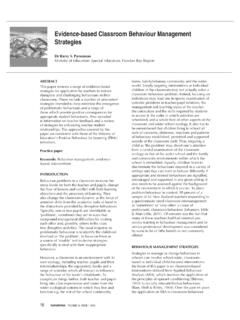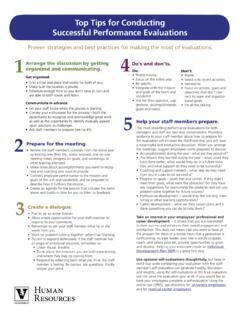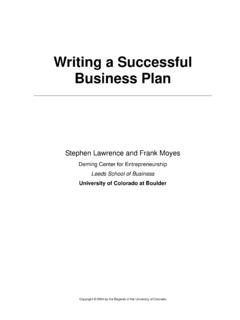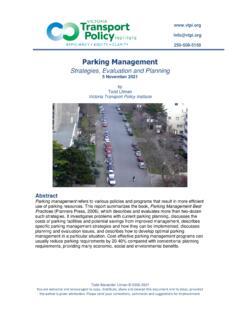Transcription of DIDACTIC TEACHING STRATEGIES FOR SUCCESSFUL …
1 Received 15 November 2013 Volume 3, Number 2, 2013 3. k tet, 2. sz m, 2013 DIDACTIC TEACHING STRATEGIES FOR SUCCESSFUL LEARNING Sz ke-Milinte Enik Abstract: The success of TEACHING -learning is defined by the mutual interaction of a number of factors, one of the most important being the DIDACTIC strategy employed by the teacher. This study will give an overview of the most important types of DIDACTIC TEACHING STRATEGIES and their genesis as well as present possible subject-specific applications of these STRATEGIES . It will also answer the question what influence the DIDACTIC TEACHING STRATEGIES have on the students personality. Key words: empirical strategy, problem-solving strategy, modelling strategy Introduction The same objective may be achieved in a variety of ways during the process of TEACHING -learning.
2 We do not follow different paths out of some gratuitous need for variety, much rather we insist on a range of TEACHING -learning methods because of scientific exigency and expeditiousness. It has been proven from an epistemological and psychological perspective that the various learning STRATEGIES lead to different learning results, as it has also been demonstrated that the different learning contents can be processed through different learning paths and with varying efficiency. As long as the SUCCESSFUL realisation of educational objectives is at stake, disciplinary methodology and didactics cannot ignore which TEACHING -learning paths and methods lead to the predefined objectives.
3 Despite still being in its infancy, TEACHING -learning strategy is one of the most fundamental methodological categories, which has been defined with the appearance of specialisations in the field of didactics and the emergence of DIDACTIC and disciplinary research within the pedagogical scientific framework. 1. What do we mean by TEACHING -learning strategy? It has transpired from the introductory notes that the optimal paths and methods should be considered when exploring the question of STRATEGIES . We should think of scripts that reveal how the pre-specified objectives can be achieved: how knowledge can be obtained, how concepts can be shaped, how a knowledge system can be constructed, how the applicable knowledge can be moulded, how skills, proficiencies and abilities can be developed.
4 When defining TEACHING -learning STRATEGIES , S ndor Nagy emphasises that the student is able to construct his/her fundamental thinking-learning operations and arrives at a stage where s/he will be able to efficiently apply the same in different situations. Thus, the TEACHING -learning strategy becomes the student s learning strategy (Nagy, 1993, 46). The strategy is such a complex system of methods, tools, organisational styles and forms aimed at achieving goals which is based on a coherent theoretical basis and which has a particular syntax (the definition and given order of executable steps) and is realised in a particular learning environment (Falus, 1998, 274).
5 It is clear from the definition that while TEACHING content answers the questions What shall we teach?, strategy reveals How we should teach?, yet it is not to be confused with the concept of method. For strategy does not refer to the organisation and realisation of a short educational moment, rather it is a long-term paradigmatic direction, perhaps covering several lessons. The paradigmatic nature means that STRATEGIES are always constructed according to the philosophical, logical or psychological theories of learning and knowing. Devising the content for a subject like 50 Sz ke-Milinte Enik PedActa, ISSN: 2248-3527 Communication also raises the issue of paradigms, although it has to be clear that apart from the science logical paradigms, learning theory paradigms also play a crucial role when devising and processing the content for school materials.
6 The mutual relationship between the paradigms of the logic of science and theories of learning poses a separate problem which is primarily faced by coursebook writers and teachers organising and realising the process of TEACHING -learning. A strategy is a long-term definition of a general direction that encompasses design, supervision, management as well as the system of the applied processes and their appropriate instructions. In general, the management and supervision of several areas of the economy and society presuppose the design, organisation, direction, monitoring and evaluation of the given activity, namely, the development of a comprehensive strategy considering the functioning and operation of the entire system.
7 Therefore, we can state that strategy is a category in a general methodological sense. When examining the nature of the STRATEGIES in the TEACHING -learning, we have to uncover the effective ways and means of the functioning and operating of the educational process which lead to the SUCCESSFUL realisation of the DIDACTIC activity. We have to construct such TEACHING -learning models that are supported by well-defined learning theoretical paradigms and facilitate the processing of educational content in the interest of the predefined objectives. Thus, STRATEGIES are well-defined means of activity orientating the process of learning which, due to their internal logic, allow for the selection and construction of methods, tools, processes and organisational forms while represent a fundamental pedagogical approach (Ferenczi and Fodor, 1996, 82-84) Empirical strategy Educational STRATEGIES were brought along by the discovery that learning can be realised through a variety of ways, down various paths with different results.
8 The fundamentals of empiricism were defined by English empirical philosophers, such as Francis Bacon or John Locke, in the 17th and 18th centuries. They believed that human acquisition of knowledge is but the reception of reality surrounding man through the senses. The main source of knowledge is experience, we become to know the world and acquire knowledge through our senses. While accruing the simple facts and phenomena of reality, man is simultaneously obliged by the same facts and phenomena to realise connections and, based on these, to deduce generalisations and abstractions. This is how concepts reflecting reality and the relationships within reality and, in turn, further generalisations lead to the discovery of laws and principles.
9 In this experiential philosophy the criterion of the truth of knowledge is empirical confirmation, namely, all knowledge is true which holds up to empirical testing. Man analyses experience gained through perception, therefore the process of experiential learning is inductive, and acquiring knowledge is considered to be moving from the simple to the complicated, from the particular to the general, from the concrete to the abstract (Figure 1.) (Nahalka, 2001, 205 ). Empiricism is the first epistemology, theoretical framework for the description of knowledge and learning, which, apart from having generated still solidly holding views and methodological processes in pedagogy, has provided a complete theoretical paradigm for the construction of didactics.
10 The systematic pedagogy based on empiricist epistemology was constructed by Herbart in the 19th century. He defined the process of learning in the following stages: a) The teacher presents the concrete manifestations of the new knowledge, which Herbart calls static reflection. b) The crystallised concept clusters soon propel into action the concepts already stored in the consciousness. This upsets the existing order and through association similar concepts from the old and new stock come into contact with each other. This is the dynamic phase of reflection. c) The concept clusters reinforced by the associations come into contact with the concept clusters already embedded into the consciousness plane.







